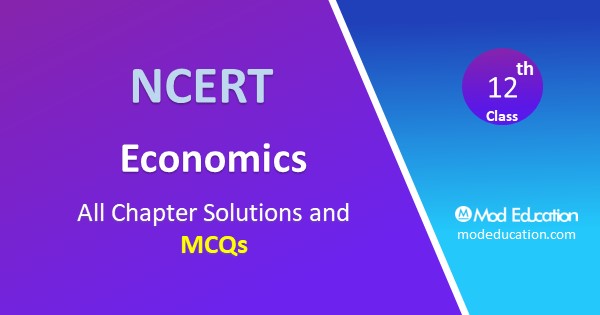MCQ Questions for Class 12 Economics Chapter 3 : Class 12 Chapter 3 “Liberalisation, Privatisation and Globalisation: An Appraisal” MCQ Questions for Class 12 Economics with Answers PDF Free Download here according to the latest CBSE syllabus and NCERT curriculum.

MCQ Questions for Class 12 Economics Chapter 3 Liberalisation, Privatisation and Globalisation: An Appraisal with PDF
Here CBSE RBSE and Other State Board NCERT Objective MCQ Questions of Class 12 Economics Chapter 3 “Liberalisation, Privatisation and Globalisation: An Appraisal with Answers Pdf will guide students to do a quick revision for all chapter.
Q1. In which year did India adopt the economic reforms?
(A) 1991
(B) 1993
(C) 1998
(D) 2001
(A) 1991
Q2. Why there was a need for economic reforms in India?
(A) Due to fiscal deficit
(B) Due to adverse BOP
(C) Rise in prices
(D) All of the above
(D) All of the above
Q3. When did the Gulf Crisis take place?
(A) 1985
(B) 1990-91
(C) 1995
(D) 1975
(B) 1990-91
Q4. How much loan was provided by World Bank and IMF during the nineties to bail India out of the crisis?
(A) $10 million
(B) $10 billion
(C) $7 billion
(D) $20 billion
(C) $7 billion
Q5. What is the main feature of New Economic Policy?
(A) Liberalisation
(B) Privatisation
(C) Globalisation
(D) All of the above
(D) All of the above
Q6. For how many industries, licensing is still necessary?
(A) 7
(B) 6
(C) 9
(D) 10
(B) 6
Q7. How many industries are entirely reserved for the public sector?
(A) 6
(B) 10
(C) 2
(D) 4
(C) 2
Q8. What is the investment limit in small scale industries?
(A) 50 lakh
(B) 1 crore
(C) 25 lakh
(D) 75 crore
(B) 1 crore
Q9. When was VAT introduced in most of the States of India?
(A) 1995
(B) 2001
(C) 2005
(D) 2006
(C) 2005
Q10. How many countries are the members of WTO?
(A) 164
(B) 120
(C) 96
(D) 48
(A) 164
Q11. When was WTO established?
(A) 1996
(B) 1998
(C) 2000
(D) 1995
(D) 1995
Q12. Where is the headquarters of WTO located?
(A) Italy
(B) Geneva
(C) New York
(D) Washington
(B) Geneva
Q13. India met with an economic crisis in 1991 as it failed to repay its —- from abroad.
borrowings
Q14. —- is the excess of expenditure (borrowings) over income.
Deficit
Q15. To overcome the crisis, India approached IMF and World Bank for—-
loan
Q16. Economic reforms refer to all those measures that aim at rendering the economy more efficient, competitive and—–
developed
Q17. Fiscal policy refers to the revenue and expenditure policy of the government to achieve —- development in the economy.
balanced
Q18. Financial sectors were allowed to take decisions on various matters, without consulting—-
RBI
Q19. Trade policy reforms led to the removal of export duties to _____India’s competitive position.
increase
Q20. India has become an important destination for global ____ since the reforms.
outsourcing
Q21. Trade between two countries is called ____ trade.
bilateral
Q22. The industrial sector has experienced___ _ in growth pattern.
fluctuations
